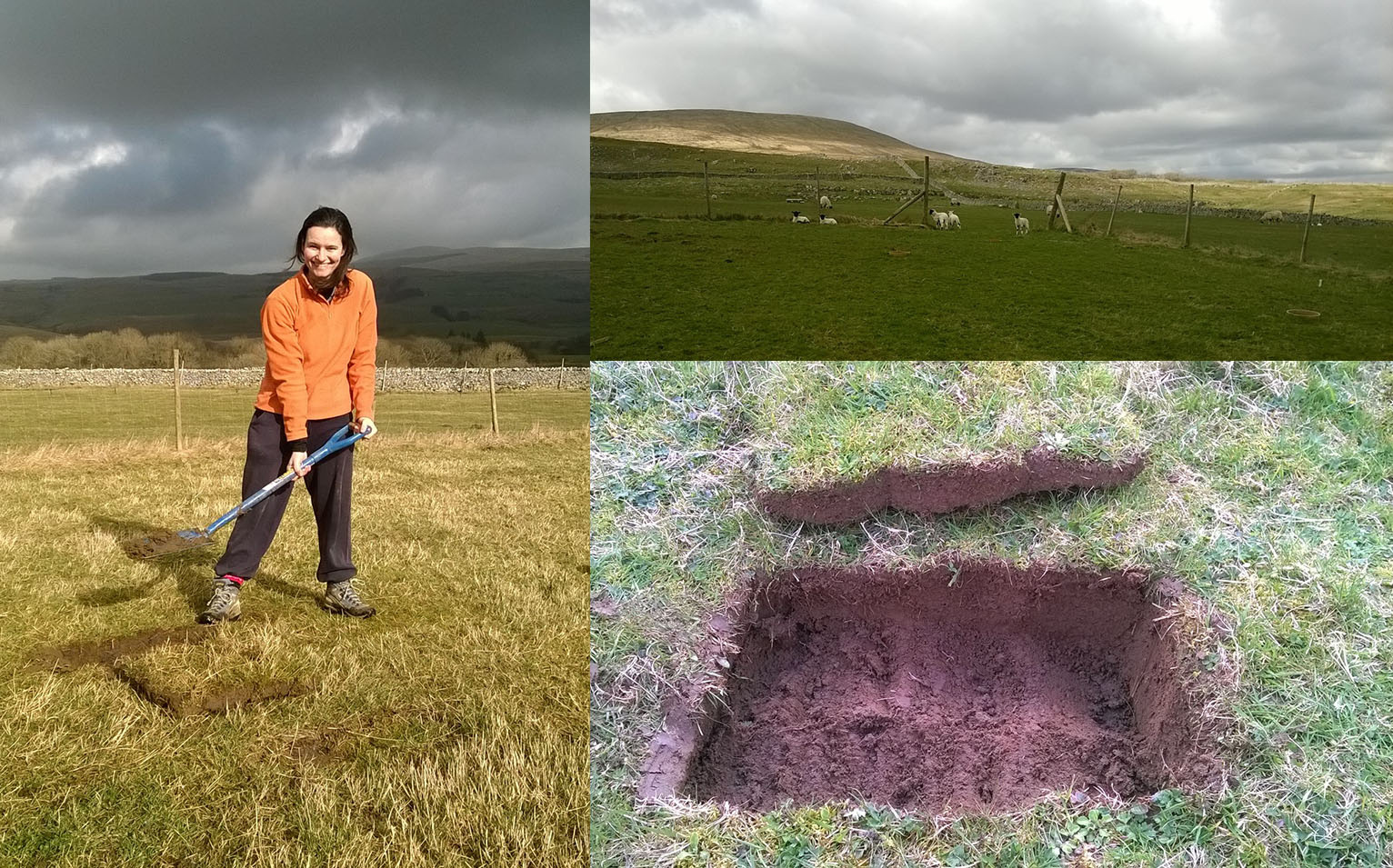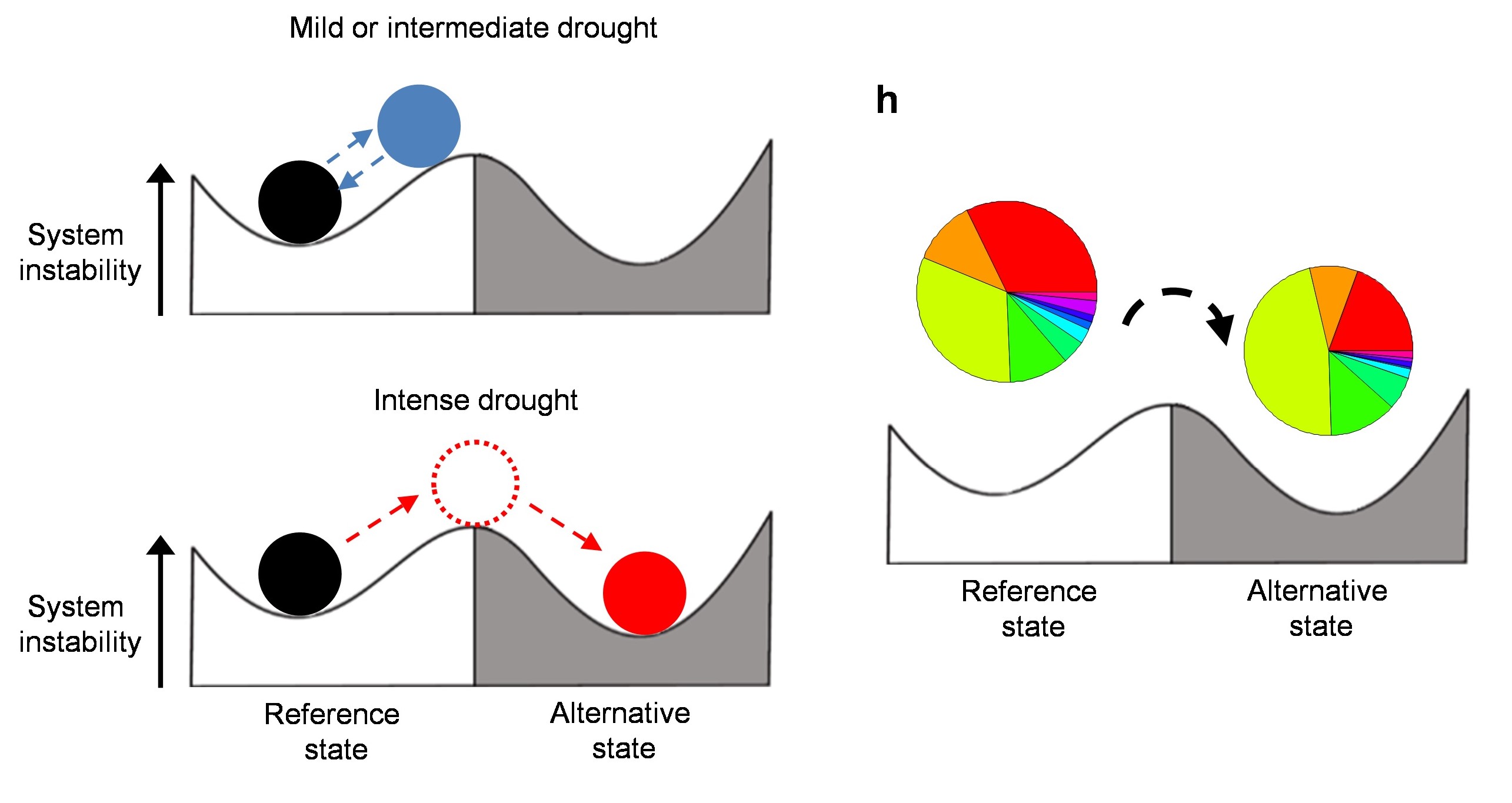Intense droughts induce abrupt and permanent shifts in soil microbial communities
Published in Ecology & Evolution

The biodiversity beneath our feet is vast. There are a myriad of microbial species dwelling in the soil, making it an extremely active and biologically complex environment. Together, these complex soil microbial communities support many ecosystem services, such as organic matter decomposition, carbon sequestration, food production, and climate regulation. But to be able to provide these services, soil microbial communities need to be diverse and functionally active. However, soils are frequently challenged by human-induced perturbations, including those related with climate change. In particular, extreme drought events are expected to increase in intensity and frequency in the future, which could strongly affect the diversity and functioning of microbial communities that live in the soil. But how does soil microbial communities respond to increasing drought intensity and frequency? How much can soil dry before the microbial community reaches a tipping point and shifts to a different state? Can we detect this tipping point and how does it affect soil functioning?
My supervisor at the time (Richard Bardgett) and I, designed an ambitious experiment to study these questions. We collected soil form a mesotrophic grassland in the north of England and brought it back to the laboratory. We then set up an incubation experiment where water content in each pot was carefully adjusted (by watering them every other day, no matter what, for a period of 9 months). During that time, we had four very busy harvests where we measured many soil variables to capture the impact of treatments on the diversity, composition and functioning of the soil microbial community. This was a daunting task and was only possible thanks to the help from members of the Soil and Ecosystem Ecology laboratory at The University of Manchester (and my husband!). Even though it was a lot of work, it was an amazing experience to work with such a great team. And the results didn’t disappoint. We observed a very clear effect of high drought intensity for almost all soil variables measured, an effect that didn’t disappear even six months after the end of the last drought cycle, even though soils had been rewetted back to their previous state. After further exploration, we found a tipping point in drought intensity of 15% soil water holding capacity, which is equivalent to a 30-year drought event. After reaching this tipping point, drought induced a major shift in the soil microbial community to one that with less complex bacterial and fungal communities and reduced functionality. These changes persisted over time and little recovery could be observed.

Me sampling soil in the Yorkshire Dales National Park, from a mesotrophic, extensively managed grassland.
At some point in the middle of this adventure, we came across the opportunity to answer another interesting question: do bacteria and fungi adapt to the constant drought cycles? This is when the Swedish team joined us (Ainara Leizeaga, Lettice Hicks, and Johannes Rousk), an invaluable addition to this experiment. They invested an incredible amount of time measuring growth rates of bacteria and fungi at different moisture levels and at different times after rewetting. They helped us discover that there were indeed some legacy effects of previous drought cycles in the responses of bacteria and fungi to further drying and rewetting. We found that bacterial communities had “adapted” to recurring drought cycles and were able recolonise the soil very quickly after rewetting, whereas fungal communities suffered more form previous drought and grew less with more intense previous drought.

Microcosms with soil, ready to start the experiment!
Taken together, all these results point to the existence of abrupt shifts in soil microbial communities triggered by intense, recurring drought. Also, once the tipping point of 15% soil water capacity is surpassed, the soil microbial community is permanently changed and functionality does not recovered, with potentially deleterious consequences for soil health. This experiment was done under laboratory conditions, but it is expected that such tipping points will occur also in the real world. In that case, they could have significant impacts on soil ecosystem services provision in the predicted future drier conditions in many areas of the globe.

Diagrammatic representations of the effects of drought on the system, represented as a ball moving up and out of the stability basin. Mild or intermediate drought do not push the ball far enough, bouncing back to the reference state, while intense drought pushes the ball out of the reference state into a different stability basin, an alternative state, with distinct functionality and microbial community composition.



Please sign in or register for FREE
If you are a registered user on Research Communities by Springer Nature, please sign in